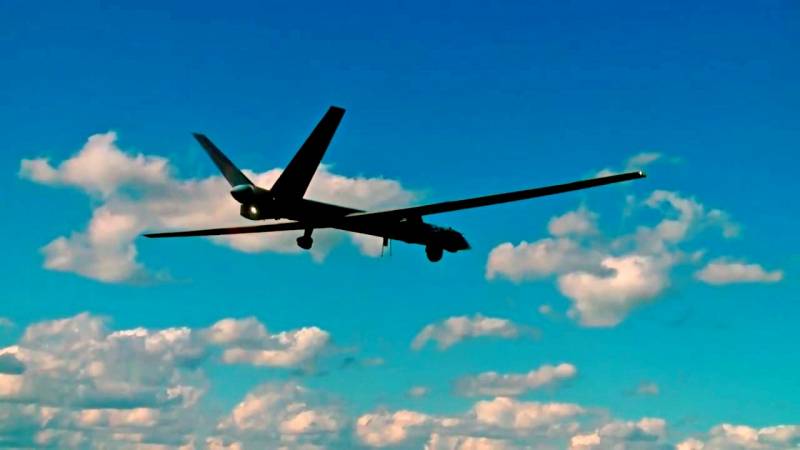Russian drone Sirius made its first flight
A unique drone, the civilian stratospheric support aircraft Sirius, made its first test flight. He is able to stay in flight for several days, which is not surprising - the Sirius pilot does not need it, but the aircraft is equipped with the latest equipment, which allows it to perform a number of important functions.
A new unmanned aircraft was developed in the Russian Federation as part of the National Technology Initiative, launched by decision of Russian President Vladimir Putin. The Aviator Aviation Laboratory, where Sirius was designed, was created back in 2000. In 2001, Alexander Begak, chief drone designer, aviator and athlete, participated in an international expedition to Antarctica, even made a parachute jump to the South Pole itself. Then Begak received a plot in Pyatigorsk for the creation of a special research aviation laboratory. Within the framework of this laboratory, aviationtechnical club "Aviator".
By the way, Alexander Begak’s account has many interesting projects, for example, a heavy drone designed to save people and able to evacuate victims from the scene for several kilometers. His tests took place in April 2017. Now it’s the turn of the drone, intended for the Arctic latitudes.
Unmanned aircraft "Sirius" - the next project of Alexander Begak, which should achieve competitiveness in the world market. The specificity of Sirius is the escort of aircraft, including in difficult climatic conditions, for example, in the Arctic region. Since Sirius can be in the air for several days, it can perform a variety of functions - this is ice reconnaissance in the Arctic latitudes, and tracking aircraft, and inspection of pipelines passing in the Arctic, and relaying radio signals.
The set of functions is impressive, and the designers believe that there is no limit to perfection and in the future, Sirius will only improve. Now the drone can be equipped with a variety of equipment for monitoring and controlling drones. "Sirius" can rise to a height of more than 10 kilometers, and its take-off weight is 140 kilograms. Alexander Begak also revealed some technical data of an unmanned aircraft - Sirius has a wingspan of nine meters and a length of two meters.
Since the Sirius successfully passed the first flight tests, it is likely that in the foreseeable future the drones created by this project will participate in the development of the vast expanses of the Russian Arctic. How quickly they enter the service depends on a number of factors, and project financing among them is far from last.
A new unmanned aircraft was developed in the Russian Federation as part of the National Technology Initiative, launched by decision of Russian President Vladimir Putin. The Aviator Aviation Laboratory, where Sirius was designed, was created back in 2000. In 2001, Alexander Begak, chief drone designer, aviator and athlete, participated in an international expedition to Antarctica, even made a parachute jump to the South Pole itself. Then Begak received a plot in Pyatigorsk for the creation of a special research aviation laboratory. Within the framework of this laboratory, aviationtechnical club "Aviator".
By the way, Alexander Begak’s account has many interesting projects, for example, a heavy drone designed to save people and able to evacuate victims from the scene for several kilometers. His tests took place in April 2017. Now it’s the turn of the drone, intended for the Arctic latitudes.
Unmanned aircraft "Sirius" - the next project of Alexander Begak, which should achieve competitiveness in the world market. The specificity of Sirius is the escort of aircraft, including in difficult climatic conditions, for example, in the Arctic region. Since Sirius can be in the air for several days, it can perform a variety of functions - this is ice reconnaissance in the Arctic latitudes, and tracking aircraft, and inspection of pipelines passing in the Arctic, and relaying radio signals.
The set of functions is impressive, and the designers believe that there is no limit to perfection and in the future, Sirius will only improve. Now the drone can be equipped with a variety of equipment for monitoring and controlling drones. "Sirius" can rise to a height of more than 10 kilometers, and its take-off weight is 140 kilograms. Alexander Begak also revealed some technical data of an unmanned aircraft - Sirius has a wingspan of nine meters and a length of two meters.
Since the Sirius successfully passed the first flight tests, it is likely that in the foreseeable future the drones created by this project will participate in the development of the vast expanses of the Russian Arctic. How quickly they enter the service depends on a number of factors, and project financing among them is far from last.

Information